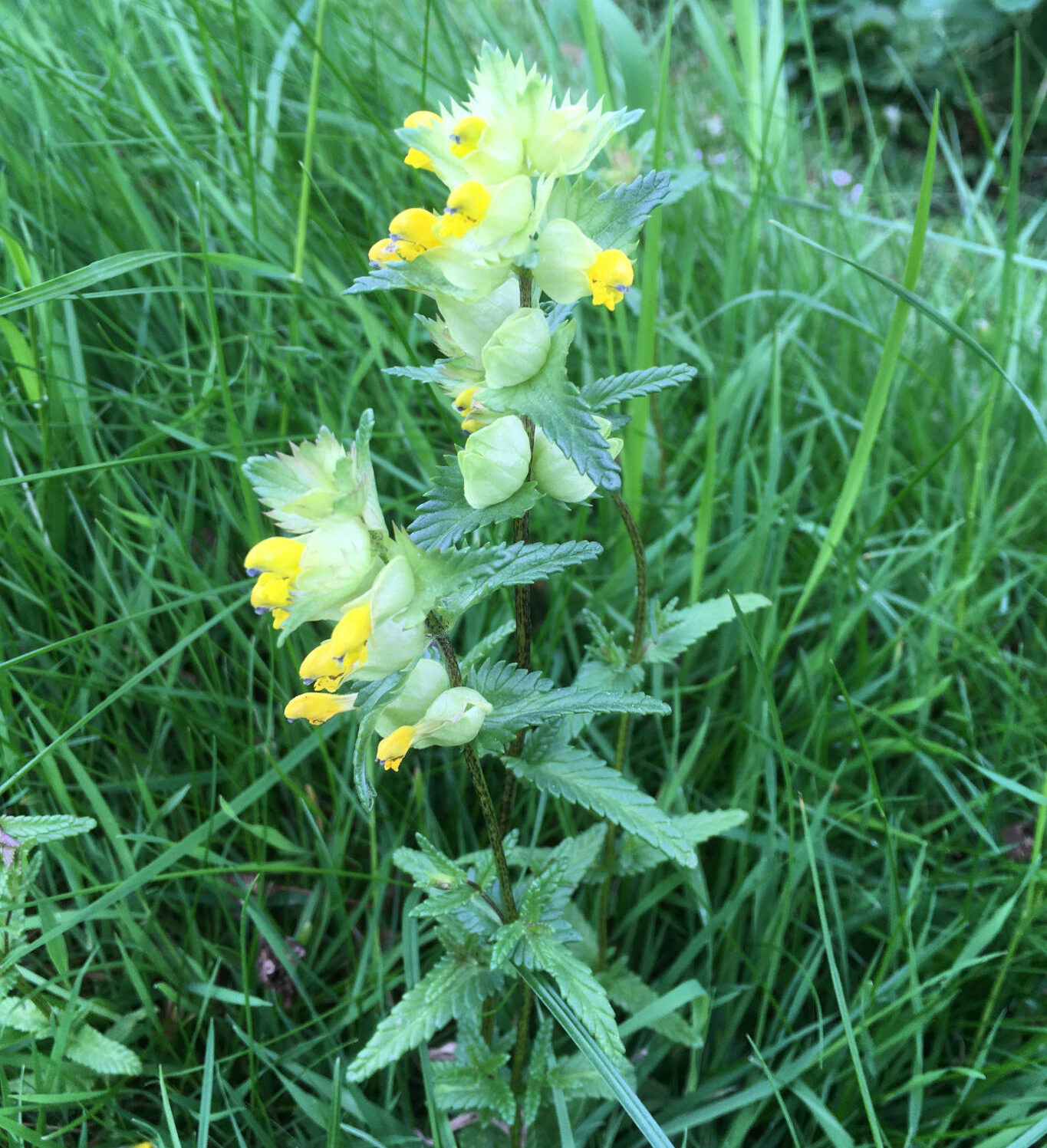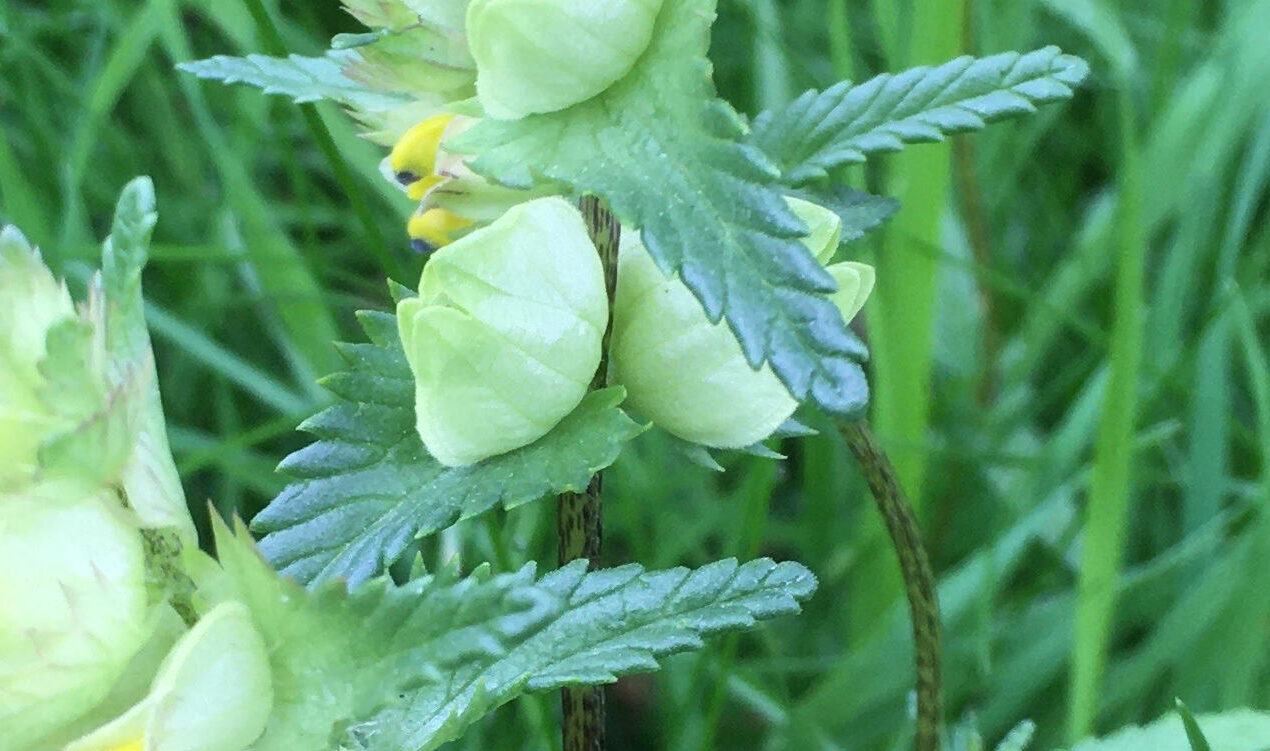Yellow rattle is an annual wildflower found throughout Europe and North America. It has yellow, hooded flowers, narrow, nettle-like leaves, and is attractive to a variety of pollinators.
The name Yellow rattle comes from its seed pods which are large, hollow structures within which the loose seeds rattle when the plant is shaken.

The Thief in the Meadow
Yellow Rattle is a parasitic plant, stealing the majority of the nutrients it needs from other nearby plants, predominately grasses. It does this by sending out its roots to make contact with the roots of its neighbors intercepting the water and nutrients that they collect.
Yellow rattle can photosynthesize itself, but without nearby host plants from which to plunder essential nutrients, it will eventually perish.
The Meadow Maker
Yellow rattle’s parasitic nature gives it the nickname ‘The Meadow Maker’. This is because the act of sapping nutrients from its host causes the host to be stunted in its growth.
When yellow rattle grows in a meadow this can lead to around a 50% restriction in the growth of grasses, allowing more room for other species to grow that would otherwise have been out-competed.
The image below illustrates this point:
Grass is extremely vigorous and will usually quickly cover and dominate an area taking most of the light and water before many wildflowers have a chance to germinate and grow. When Yellow Rattle is present, grass growth is far less vigorous providing the opportunity for other wildflowers to establish creating a more richly diverse meadow.
Grow it at Home
If want to make a meadow of your own or even just enrich wild areas in your lawn, then a packet of yellow rattle seed is going to help you get started.
There are many places you can buy them online but always check the seed is fresh as yellow rattle seed is only viable for around a year or two. Any seed older than this will often fail to germinate.



